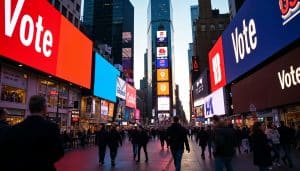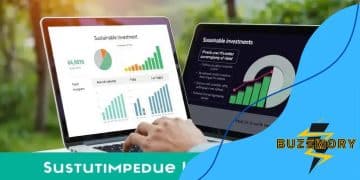NYC congestion pricing results 2025


As New York City introduces NYC congestion pricing in 2025, the initiative is expected to transform the way people move around the city, with implications for traffic flow, air quality, and the overall urban experience.
For residents and visitors alike, it’s crucial to understand how this change will impact daily routines and the city’s future growth.
This new policy aims to reduce congestion and increase investment in public transportation, making the city more livable and sustainable.
Understanding NYC congestion pricing
Understanding NYC congestion pricing is essential for anyone navigating the city’s busy streets, whether you’re a commuter, business owner, or visitor.
As New York City faces growing traffic congestion and environmental challenges, congestion pricing emerges as a strategic initiative aimed at reducing traffic flow, improving air quality, and generating funding to enhance public transportation.
This policy directly addresses the city’s most pressing transportation issues while encouraging sustainable urban mobility.
How Congestion Pricing Works
At the heart of NYC congestion pricing, drivers are charged a fee to enter specific parts of Manhattan during peak traffic hours. This approach has proven effective in cities such as London and Singapore, where it significantly reduced traffic congestion.
With fewer cars on the road, travel becomes smoother, reducing delays and improving the overall flow of vehicles. This results in faster, more predictable travel times, benefiting both drivers and pedestrians.
By implementing congestion pricing, the city is taking a proactive step toward modernizing and optimizing the flow of traffic.
Key Benefits of NYC Congestion Pricing
The benefits of NYC congestion pricing are multi-faceted. First, it will contribute to a reduction in traffic congestion during peak hours.
By charging drivers who enter the busiest areas, the city aims to ease congestion, making for a more pleasant experience for everyone on the road.
In addition, the revenue generated from this pricing model will be allocated directly to improving the city’s public transportation system, ensuring better service for residents and visitors alike.
The air quality is also expected to improve as fewer vehicles on the road result in fewer emissions, contributing to a cleaner, healthier urban environment.
Furthermore, NYC congestion pricing encourages the use of alternative transportation options, such as public transit, biking, or walking, reducing the overall dependency on cars.
Impact on Daily Commuting and Transportation Patterns
As NYC congestion pricing takes effect, it will likely lead to changes in the commuting habits of both residents and visitors. With the new fees in place, many drivers may alter their routes or opt for public transit to avoid the charged zones.
This shift can lead to a reduction in private vehicle traffic, helping ease congestion not only in Manhattan but also in surrounding areas.
The increased revenue generated will be reinvested into enhancing the public transportation system, offering better and more reliable services that will help more people use buses, subways, and commuter trains.
Over time, as the use of public transit increases, there will be a significant decrease in the overall reliance on cars for daily commuting.
Staying informed about how NYC congestion pricing will affect your daily travel plans is important to ensure a smooth transition.
As the system rolls out, understanding its benefits and adjustments will allow you to make better choices for your commute, whether you are a local resident or visiting the city.
Projected outcomes for congestion pricing in 2025
The projected outcomes for NYC congestion pricing in 2025 provide a forward-looking perspective on how this initiative will help the city address both traffic and environmental challenges.
As New Yorkers prepare for these changes, it is crucial to understand the potential impacts of this pricing model, which aims to reshape the way we move through the city and improve the overall urban environment.
Traffic Reduction and Smoother Commutes
One of the most anticipated outcomes of NYC congestion pricing is a substantial reduction in traffic congestion, particularly during peak hours.
Cities around the world that have implemented similar congestion pricing models, such as London and Singapore, have experienced measurable decreases in the number of vehicles on the road.
As a result, traffic flow becomes smoother, and travel times are significantly reduced. Fewer cars on the road mean fewer delays, which will improve overall commuting experiences for drivers, cyclists, and pedestrians alike.
The decrease in vehicle volume is expected to relieve bottlenecks and congested areas, creating a more efficient transportation network throughout the city.
For New Yorkers, this translates into shorter, less stressful commutes, and better access to public transit.
Improved Air Quality and Environmental Benefits
Another significant benefit projected from NYC congestion pricing is the potential improvement in air quality. With fewer vehicles on the road, harmful emissions, including nitrogen oxides and particulate matter, are expected to decrease.
This reduction in air pollution will contribute to cleaner air, benefiting not only those living in Manhattan but also surrounding boroughs.
The long-term environmental effects could be far-reaching, helping New York City move toward a greener, more sustainable future.
Cleaner air also has considerable public health benefits.
As emissions from vehicles decrease, the incidence of respiratory illnesses and other pollution-related health issues could decline, improving the quality of life for residents, especially those who are most vulnerable, such as children and the elderly.
Revenue Generation and Investment in Public Transport
In addition to the environmental and traffic-related outcomes, NYC congestion pricing will generate substantial revenue, which will be earmarked for improving the city’s public transportation system.
With this influx of funds, New York City can invest in critical infrastructure upgrades, such as expanding subway services, increasing the frequency of buses, and maintaining the existing systems.
The enhanced public transportation services will make commuting more efficient and reliable for those who choose to leave their cars at home.
Investing in public transit is expected to result in increased ridership, further decreasing reliance on private vehicles.
As more people use the subway, buses, and commuter trains, traffic on the roads will continue to decrease, creating a positive feedback loop for the city’s transportation system.
Urban Mobility Enhancements and Infrastructure Projects
The revenue generated from NYC congestion pricing is also expected to support the development of enhanced infrastructure across the city.
This could mean improved bike lanes, safer pedestrian walkways, and overall upgrades to the urban mobility network.
These infrastructure enhancements will not only make New York City more navigable for pedestrians and cyclists but will also contribute to a more sustainable and eco-friendly urban environment.
By creating a well-planned, multi-modal transportation system, New York City will reduce its dependence on private vehicles. These long-term improvements will further elevate the city’s position as a global leader in urban mobility.
Looking Ahead: The Future of NYC’s Travel Landscape
As we look ahead to 2025, NYC congestion pricing represents a major shift in how the city handles its traffic and transportation issues.
The benefits are far-reaching, from smoother commutes and improved air quality to better public transit and a greener urban environment.
With these changes, New York City has the potential to set a global standard for managing urban congestion and creating a more sustainable future.
New York’s innovative approach could inspire cities worldwide to adopt similar strategies, demonstrating the power of congestion pricing to not only tackle traffic but also support a thriving, eco-conscious city.
As the city adapts to these changes, it will be crucial for residents, commuters, and businesses to stay informed and adjust to the evolving transportation landscape.
With NYC congestion pricing, the city is embarking on a journey toward smarter, more sustainable urban travel.
Impact on traffic and air quality

The implementation of NYC congestion pricing is set to have a profound impact on both traffic flow and air quality across the city.
By charging a fee for driving in certain areas during peak hours, the plan aims to reduce the number of cars on the road. This approach not only addresses traffic congestion but also contributes to a healthier and more sustainable urban environment.
Traffic Flow Improvements and Smoother Commutes
One of the primary objectives of NYC congestion pricing is to enhance traffic flow throughout the city. With fewer vehicles competing for road space, travel times are expected to decrease, benefiting both drivers and public transit riders.
By reducing congestion, the city’s roads become more efficient, and those who need to drive will experience less time spent stuck in traffic.
The key advantage of NYC congestion pricing is its ability to prioritize essential travel while reducing the pressure on heavily trafficked areas. Drivers can look forward to smoother commutes, less frustration, and more predictable travel times.
For residents who rely on public transportation, this could lead to fewer delays and more reliable service, creating a better overall commuting experience.
As congestion decreases, public transportation services, funded by the revenue from congestion pricing, can expand and improve.
These changes will further reduce the demand for private vehicle use, offering New Yorkers a more integrated, efficient, and eco-friendly travel system.
Environmental Benefits and Air Quality Improvement
In addition to alleviating traffic, NYC congestion pricing brings significant environmental benefits. Fewer cars on the road means reduced emissions of harmful pollutants such as nitrogen oxides and particulate matter, leading to cleaner air.
This improved air quality could have substantial health benefits for city residents, particularly for vulnerable populations such as children, the elderly, and those with respiratory issues.
Cleaner air also supports broader city-wide efforts to combat climate change. With the reduction of traffic-related emissions, New York City moves closer to its sustainability goals, contributing to a healthier environment for current and future generations.
Shift in Commuting Habits and Increased Public Transit Use
The implementation of NYC congestion pricing is also expected to influence commuter behavior.
Many drivers, discouraged by the additional costs of driving during peak hours, may opt for alternative transportation methods such as public transit, biking, or walking.
This shift in commuting habits will likely result in an increase in public transit ridership, which in turn supports the need for further investments in and improvements to the city’s subway, bus, and commuter rail systems.
Encouraging public transportation use will reduce vehicles on the road and generate more revenue to reinvest in improving NYC’s transit system.
Long-Term Benefits for a Sustainable City
Overall, NYC congestion pricing offers a long-term solution to urban mobility challenges.
By improving traffic flow and air quality, the program creates a more sustainable urban environment that balances the needs of drivers, public transit riders, and pedestrians alike.
The reduction in private vehicle use, coupled with increased public transit investment, sets New York City on a path toward a cleaner, more efficient future.
As NYC congestion pricing rolls out in the coming years, its long-term benefits are poised to enhance the city’s livability and sustainability.
This initiative offers a model for other cities worldwide to address traffic congestion, improve air quality, and create more equitable and efficient transportation systems.
Reactions from commuters and businesses
The reactions from commuters and businesses to NYC congestion pricing reflect a blend of curiosity, concern, and anticipation about the upcoming changes.
As this transformative plan progresses, many are eager to understand how it will affect their daily lives and the city’s overall mobility. Commuters, in particular, are closely monitoring how the new fees will impact their travel choices and costs.
Commuter Perspectives
The introduction of congestion pricing has sparked a range of reactions from commuters, especially regarding the potential costs involved.
Some are worried that the additional fees will put pressure on their personal budgets, particularly for those who rely on private vehicles for daily travel. The financial burden, though, is perceived differently by others.
Many commuters hope that the improved traffic flow resulting from fewer cars on the road will lead to a more pleasant experience, potentially saving time on their commutes.
Additionally, a significant number of people are optimistic that the revenue generated from the fees will lead to improvements in public transportation, making it more efficient and accessible.
This could ultimately provide more sustainable and affordable alternatives to driving, helping to alleviate congestion and improve overall mobility in the city.
Business Reactions
The impact of congestion pricing on businesses has been met with mixed reactions as well. On one side, businesses are hopeful that reduced traffic congestion will make deliveries more timely and efficient, which could boost their operations.
For businesses that rely on customer visits, the improved travel flow could lead to increased foot traffic in certain areas, making it easier for customers to access their services.
However, small businesses in particular have voiced concerns about how higher transportation costs for both customers and employees might negatively impact their operations.
Some fear that the additional fees might deter customers from visiting, especially in areas where alternative transportation options are limited or public transit options are not well-connected.
Feedback from the Community
Feedback from commuters and businesses alike is essential to shaping the final outcomes of congestion pricing.
Those who support the initiative argue that the long-term benefits of a more efficient and sustainable transportation system outweigh the initial challenges.
However, feedback also reveals concerns about the immediate and long-term impacts of the pricing system, such as:
- How will congestion pricing affect daily commuting costs, especially for those who live or work outside the congestion zone?
- Will public transportation improvements be implemented in a timely manner to accommodate increased demand?
- What are the long-term economic and environmental benefits for both residents and businesses in NYC?
As the discussion continues, it is crucial for both the public and private sectors to collaborate in addressing concerns and refining the plan to ensure it delivers the intended benefits for all New Yorkers.
By maintaining open lines of communication, both commuters and businesses can better adapt to the evolving landscape of NYC’s transportation system, and more effectively capitalize on the improvements that congestion pricing aims to bring.
Potential economic effects on the city

The potential economic effects of NYC congestion pricing are wide-reaching and multifaceted, sparking a broad discussion about how the implementation of this model will reshape the city’s economic landscape.
As New York City looks to introduce these changes, residents, businesses, and policymakers are closely monitoring the potential long-term effects on both the economy and quality of life.
Increased Revenue for Public Transport
One of the most significant economic impacts of NYC congestion pricing is the increase in revenue generated through the fees charged for driving in congested areas.
These funds will be directed towards enhancing public transportation infrastructure, a vital investment for a city with a dense population and high transportation demand.
The funds generated will help improve the overall commuting experience in a number of ways.
Increased revenue will allow the city to enhance service frequency, making buses and subways run more often and providing a more reliable and accessible public transportation system.
The funds can also support the maintenance and upgrades of aging infrastructure, addressing critical needs and improving service quality.
Additionally, the investment will improve accessibility for all riders, including seniors and individuals with disabilities, ensuring public transit remains equitable and effective.
With these improvements, NYC congestion pricing has the potential to transform the city’s public transportation system into a more modern, efficient, and accessible mode of travel, benefitting everyone who depends on it.
Impact on Local Businesses
While the primary focus of congestion pricing is to reduce traffic congestion and improve air quality, its economic impact extends to local businesses as well.
Some businesses are concerned that reduced foot traffic, particularly in congested areas, could negatively affect their sales. However, this concern must be weighed against several positive effects.
Reduced congestion means that customers will have better access to stores, creating a more pleasant and efficient shopping environment. This could lead to increased foot traffic in areas that were once difficult to access.
Moreover, smoother traffic flow will improve delivery efficiency for businesses, reducing operational costs and helping with supply chain management.
Over time, businesses might also benefit from the creation of new job opportunities as the revenue from congestion pricing is reinvested into infrastructure projects.
Additionally, a more efficient public transport system and improved urban infrastructure could lead to increased property values, benefiting homeowners and investors.
While NYC congestion pricing may present challenges for some sectors, its broader economic effects, such as improved mobility and job creation, could benefit businesses in the long run.
Conclusion: The Future of NYC Congestion Pricing
As NYC congestion pricing continues to move forward, it represents a transformative step toward addressing the city’s traffic and environmental challenges.
By introducing tolls to the most congested areas during peak hours, the city aims to reduce traffic flow, improve air quality, and invest in the development of public transportation infrastructure.
While the system will undoubtedly have an impact on daily commuters, the long-term benefits for the city’s mobility and sustainability are undeniable.
The revenue generated by NYC congestion pricing will be crucial in enhancing the city’s public transit options, allowing New Yorkers to benefit from more frequent and reliable subway and bus services.
This shift will not only improve travel times but also create a more eco-friendly and accessible transportation network for all residents and visitors.
For businesses, the reduction in traffic could lead to smoother logistics and improved access to customers, even as some might initially be concerned about changes in foot traffic.
On the whole, NYC congestion pricing fosters a more pedestrian-friendly, efficient, and healthier city, promoting sustainability and economic vitality.
To ensure you’re fully prepared for the NYC congestion pricing changes, it’s important to stay informed through resources such as the MTA Congestion Relief Zone and 311 NYC.
By understanding the system and adjusting your commute accordingly, you’ll be able to navigate the new landscape with ease.
Ultimately, NYC congestion pricing is more than just a traffic management tool; it’s a step toward creating a more livable, sustainable, and equitable city.
As New York City continues to evolve, this initiative will serve as a model for other urban centers looking to tackle congestion and environmental issues.
FAQ – Frequently Asked Questions About NYC Congestion Pricing
What is congestion pricing?
Congestion pricing is a fee charged to drivers for entering certain areas of NYC during peak hours, aimed at reducing traffic and improving air quality.
How will congestion pricing affect public transportation?
The revenue generated from congestion pricing will be used to improve public transportation services, making them more efficient and accessible.
What are the expected benefits for commuters?
Commuters can expect shorter travel times and improved traffic flow as a result of fewer vehicles on the road during peak hours.
How might businesses react to congestion pricing?
While some businesses may initially worry about reduced customer access, many could benefit from increased foot traffic in less congested areas and improved delivery times.
Liked the article?





